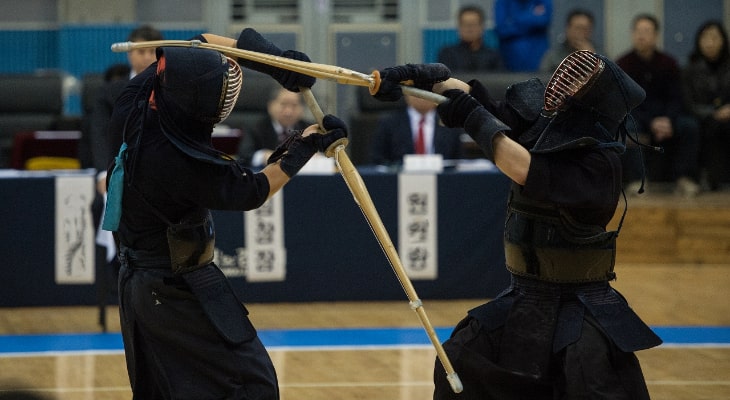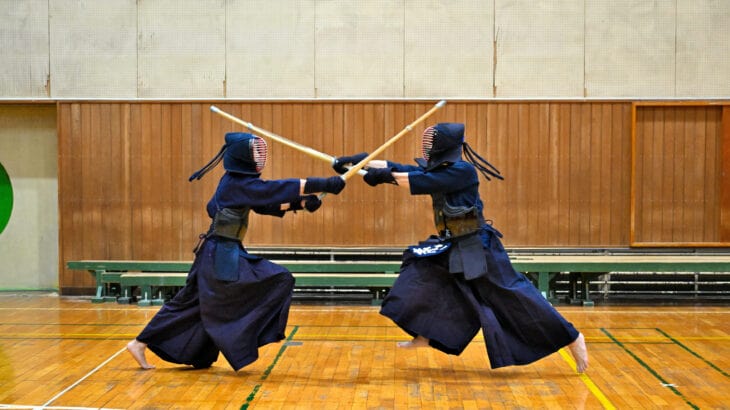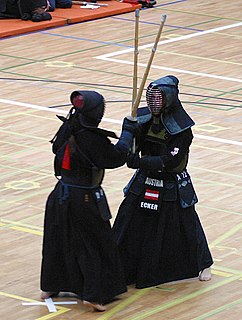
Kendo is a traditional Japanese martial art that many people use to hone their skills and pursue spiritual growth.
However, among these, the “tsuki” technique is an advanced technique that requires appropriate guidance and safety measures.
In this article, we will focus on accidents during kendo caused by tsuki, especially serious injuries and fatalities, and provide a detailed explanation of their causes and preventive measures.
By providing the knowledge necessary to practice Kendo safely and specific advice on how to prevent accidents, we help Kendo enthusiasts continue practicing in a safer environment.
目次
What is Kendo?
Kendo is a traditional Japanese martial art, and its purpose is not only to improve swordsmanship techniques, but also to hone the mind and body, and aim for moral maturity.
In this section, we will explain in detail the historical background of Kendo, its spiritual aspects, and the technique called tsuki.
The history and spirit that form the basis of Kendo
The history of Kendo is deeply rooted in Japan’s samurai culture.
It began in ancient times when samurai would hone their swordsmanship in preparation for actual combat, and today it has developed into a formalized competition.
Kendo aims to teach true courage, etiquette, and self-control through the “do of the sword,” and places importance on training not only the body but also the mind.
Kendo training is extremely rigorous, requiring precision and explosive power in each movement, but it also encourages inner growth.
What is “tsuki” and its technical explanation
“Tsuki” is one of the techniques used in Kendo, and is a technique in which the Shinai is quickly thrust toward the opponent’s throat.
This technique requires advanced technique and precise control.
Tsukes can be an effective source of points in Kendo matches, but their execution requires extremely high precision and consideration for safety.
When practicing thrusts, it is very important to learn the correct form and force so as not to injure your opponent.
A properly executed “tsuki” symbolizes the technical beauty and effectiveness of kendo, but carelessness can also lead to accidents, so safety measures are always emphasized.

Cases of fatal accidents caused by “tsuki” in kendo
In Kendo, competition safety is always emphasized, but in the past there have been tragic accidents caused by “tsuki”.
Through these cases, the importance of safety measures in Kendo has been reconfirmed, and efforts are being strengthened to prevent future accidents.
Introduction of specific accident cases
-
Case study at Rokko Gakuin High School : A student received a “poke” while practicing Kendo, resulting in an accident that resulted in brain damage. This accident had such a serious impact that the students took legal action, and sparked a debate about safety measures in Kendo ( Sun TV | ) .
-
Case study at a high school in Fukuoka : There was a case in which a female student felt psychological pressure and committed suicide due to excessive “puking” by a kendo club advisor. In this case, the advisor’s teaching methods were called into question, and the way kendo instruction should be conducted in educational settings was discussed ( FNN Prime Online ) .
Background and cause analysis of the accident
These accidents show that the cause is not only the technical aspects of kendo, but also the quality of the instructor and the teaching method. In particular, the following points were noted:
- Instructor qualifications and training methods : Accidents can be attributed to inappropriate guidance by instructors and lack of safety measures. Appropriate training and instructor qualifications are required to safely teach Kendo techniques.
- Lack of safety equipment : Failure to use appropriate protective equipment or provide a safe practice environment increases the risk of serious accidents.
- Lack of psychological support : Mental support and proper stress management are necessary, especially for young Kendo practitioners. Excessive pressure and mental stress can lead to accidents.
There are many lessons to be learned from these cases, and it is necessary for the entire kendo community to review safety measures and work to prevent recurrence.
In order to enjoy Kendo safely, continuous education and improving the quality of instructors are essential.

Understanding the dangers in Kendo
The technique of “tsuki” plays an important role in kendo, but this technique carries great risks if not handled properly.
Here, we will explain in detail the risks associated with “tsuki” techniques and precautions for safe practice.
Risks brought about by “thrust” technology
“Tsuki” is one of the basic techniques of Kendo, and is a technique in which the tip of the Shinai sword is quickly thrust into the opponent’s throat.
While this technique is effective, it can cause serious injury if you accidentally apply too much force or do not place the plunge in the correct location.
In particular, a strong impact to the throat can damage the airways and cause serious internal injuries, which in the worst case can even be life-threatening.
Points to note for safe practice
-
Use proper armor :
- When practicing Kendo, it is important to pay special attention to the men part that protects the throat and always wear it correctly. The mask plays a particularly important role in protecting against thrusts to the throat.
-
Increase the accuracy of your technique :
- When performing “tsuki”, the accuracy of the technique is extremely important. In order to learn correct form and the appropriate amount of force, learn carefully from the basics to advanced exercises under the guidance of an instructor.
-
Control practice :
- When punching, practice adjusting the amount of force and controlling the technique, and be careful not to apply excessive force. By increasing the precision of technology, unexpected accidents can be prevented.
-
Learn what to do in an emergency :
- It is also important to know first aid methods in case of an accident. Check the emergency response plan at your dojo or practice facility, and be prepared to contact medical institutions quickly if necessary.
Kendo’s “tsuki” technique involves great risks, but with appropriate measures and careful instruction, it can be practiced safely.
The key to enjoying Kendo with peace of mind is for all Kendo practitioners to be aware of these points and respect each other’s safety.

Specific measures to prevent accidents
To ensure safety in Kendo, it is important to understand how to choose and wear the appropriate protective gear, and to deepen your awareness of the qualities and responsibilities required of instructors.
By implementing these measures, you can greatly improve the safety of Kendo.
How to choose and wear appropriate protective gear
-
How to choose armor :
- When choosing armor, focus on protection, fit, and durability. In particular, since the men are an important part of protecting the throat, it is important to choose products that use high-quality materials and manufacturing techniques.
- For children and beginners, choosing protective gear that is lightweight and easy to handle will improve movement and safety.
-
How to install :
- When wearing armor, make sure all parts fit properly, especially check that the face laces are properly tightened.
- It is important to practice how to properly put on and take off protective gear, and always double-check that you are wearing it before practice.
Qualities and responsibilities required of leaders
-
Qualifications :
- Kendo instructors not only have technical knowledge, but also their qualifications as educators are very important. This includes a deep understanding of safety and teaching that takes into account each student’s individual abilities and personality.
- You are required to engage in continuous learning and self-improvement, and acquire the latest safety knowledge and teaching techniques.
-
responsibility :
- Instructors are responsible for providing a safe practice environment. This includes using proper protective equipment, implementing safe practice methods, and having an emergency response plan in place.
- It is also important to maintain close communication with students and parents and raise their awareness of safety.
By properly implementing these measures, we can increase the safety of Kendo and allow more people to enjoy this martial art with peace of mind.
Safety measures are the basis of practicing Kendo, and are an issue that all practitioners and instructors should strive for together.

Safety measures and future initiatives in the Kendo world
Kendo is one of Japan’s most representative martial arts and is widely practiced both domestically and internationally.
Kendo safety measures are emphasized at all levels, from daily practice to international competitions.
This section explores the status of national safety standards in kendo and the efforts by domestic and international kendo organizations to improve safety.
Status of national safety standards
The Kendo community has established guidelines for safety measures, including the use of appropriate protective equipment, qualifications for instructors, and standards for practice methods.
The Japanese Kendo format strictly prescribes the correct execution of techniques, especially in order to minimize the risks that may arise during the competition.
Additionally, organizations such as the All Japan Kendo Federation regularly review and update safety standards at kendo dojos.
It is hoped that this will result in consistent safety measures being implemented at dojos across the country.
Efforts to improve safety by domestic and international kendo organizations
Not only domestic kendo organizations but also the International Kendo Federation are actively working to improve the safety of kendo.
This includes stricter safety rules at international competitions and enhanced leadership training programs.
As Kendo spreads internationally, athletes from different cultures and physiques participate, so safety measures are required to adapt to diverse situations.
For example, kendo federations in Europe and the United States have established safety protocols based on local regulations and teach safety techniques through regular seminars and workshops.
These efforts are essential for Kendo to remain safe.
Preventing accidents and raising safety awareness are the foundations for continuing Kendo for a long time, and provide an environment where all Kendo enthusiasts can practice with peace of mind.
It is expected that the kendo community will continue to further strengthen these safety standards and support the healthy development of kendo.

Advice and warnings from those with experience
When practicing Kendo, you need to pay attention not only to improving your technique but also to safety.
Those who have practiced Kendo for many years offer tips on how to enjoy it safely, as well as valuable advice on common dangers and how to avoid them.
Through these tips, Kendo enthusiasts can practice more safely.
Tips for enjoying Kendo safely
-
Make proper preparations :
- Before practicing, it is important to warm up properly and move your body sufficiently. Prepares muscles for action and reduces risk of injury.
-
Understand the correct way to learn technology :
- Start with basic techniques and gradually progress to applied techniques. If you try to learn difficult techniques in a hurry, you are likely to develop poor technique.
-
Always check the condition of your armor :
- It is recommended that you check that not only your own protective gear, but also the protective gear of others, is properly fitted before practice.
Experienced people talk about familiar dangers and how to avoid them
-
Don’t be overconfident :
- As you gain more experience, it becomes easier to become overconfident, so you must always be prepared to practice Kendo faithfully to the basics. Always be aware of the accuracy and safety of your technique.
-
Thorough health management :
- You need to pay attention to the small signs of your body and have the courage to rest when you are not feeling well. Accumulating fatigue can easily lead to injuries and accidents.
-
Value communication with instructors :
- If you have any concerns or questions, it is important that you do not hesitate to consult your instructor. Open communication is essential to practicing in a safe environment.
By taking advantage of the advice from these experienced practitioners, you will be able to hone both your Kendo techniques and spirit while enjoying your daily practice safely.

Summary and message to readers
Through this article, we deepened our understanding of the safety of the “tsuki” technique in kendo, and learned about its dangers and appropriate countermeasures.
Kendo is not just a sport, it is a martial art that trains both the mind and body.
Therefore, safety measures are not just preventative measures, but an essential part of practicing Kendo.
What Kendo practitioners can do to prevent accidents
-
Always stay true to the basics :
- Learning the basic techniques of Kendo and always executing them accurately will help prevent accidents. Improving technology is essential to ensuring the safety of yourself and others.
-
Use proper armor :
- Choose high-quality armor and wear it correctly. Protective gear is the most basic tool to enjoy Kendo safely.
-
Exercises that take your physical condition into consideration :
- Always keep track of your physical condition and practice without straining yourself. When fatigue is accumulating, it is important to take adequate rest.
Call for building a safe kendo environment
-
Dojo safety management :
- Dojo operators and instructors are responsible for maintaining a safe practice area by conducting regular safety checks and maintaining the environment.
-
Education and awareness :
- All students and instructors of Kendo are required to receive Kendo safety education and raise their awareness of the risks.
-
Community cooperation :
- Kendo practitioners, parents, schools, and kendo organizations need to work together to create a safe kendo environment.
For everyone who follows Kendo, safety is not only for themselves, but also for other Kendo practitioners.
By building and maintaining a safe Kendo environment, we will be able to pass on this beautiful martial art to the next generation.
The essence of this martial art is to work together and enjoy Kendo safely.


